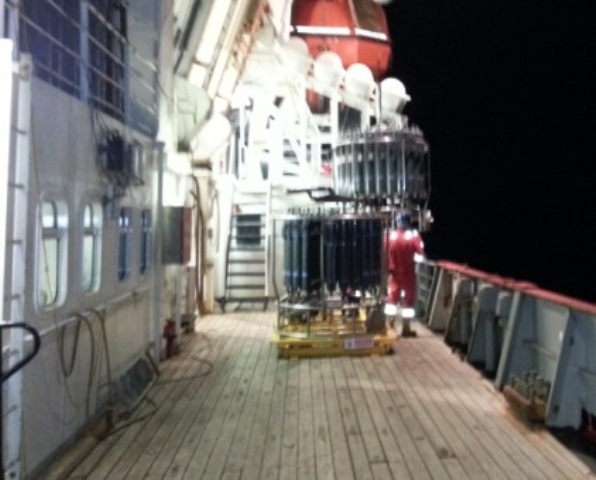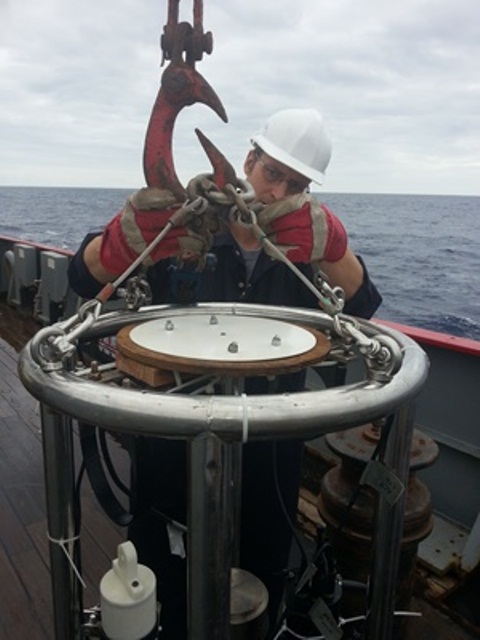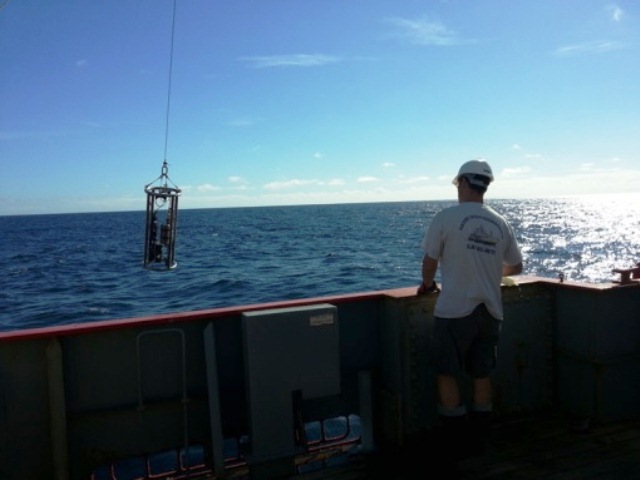[custom_field limit=”0″ between=”, ” /]From Bob Brewin (Plymouth Marine Laboratory, UK), 15 October – currently doing experiments for ESA aboard the RRS James Clark Ross on the 23rd Atlantic Meridional Transect
We started sampling last Wednesday following the confirmation of our route, shown in the figure below.
I may be a cruise, but it certainly is hard work. Over the last four days my routine has been intense. I am up at 05:00 to set up for the pre-dawn conductivity temperature and depth profile during which the first optics cast is deployed.
I then filter water for three hours to extract phytoplankton pigment data at different water depths, before setting up the hyperspectral radiometer as I described in the previous blog post.
The filtering datasets are then logged and I then spend the rest of the morning processing the hyperspectral data.
After lunch, I help Giorgio Dall’Olmo with second optics cast while the second conductivity temperature and depth is deployed.
The afternoon and early evening is spent filtering more water for pigments, particulate organic carbon and fatty acids.
After dinner I just have time to call my wife and relax before crashing to sleep with the ‘motion of the ocean’.












Discussion: no comments